Category Archives: Invertebrate Profiles
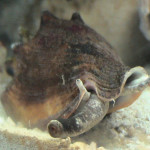
Conch Snail
Common Name: Conch Snail, Fighting Conch
Scientific Name: Strombus spp
Reef Safe: Yes
Temperament: Peaceful
Care Level: Easy
Max Size: Around 2 inches
Appearance:
These are one of my preferred choices for a cleanup crew in my aquariums. Their shells have a very traditional “sea shell” shape to them. Basically, that is a cylinder or cone shaped shell with a elongated opening for their boot. They have a long “snout” like mouth and if you look closely, you can see their eyes peeking out from inside the shell. When scared or stressed, they can completely tuck into their shell.
Temperament
While conch snails are typically very peaceful snails, male conch snails can sometimes be territorial towards other male conch snails. The term “fighting conch” is not truly reflective of their temperament.
Environment
Conch snails do best in aquariums with a lot of sandy substrate for them to forage in for food. They will best in mature set-up or new set-ups with stable parameters as well as at least one inch of substrate. Provided there is enough algae to sustain them, the conch snails are suitable for 55 gallon (or larger) aquariums. As they like to root around in your substrate in search of food, they will help to keep the substrate well aerated and maintained. Trace amounts of copper based medications can be lethal to a conch snail.
As their shell has a rather large opening as compared to most other snails, you need to make sure you to not keep them with any natural predators like hermit crabs. Hermit crabs have been known to kill conch snails in order to steel their shells.
Recommended water conditions:
I would refer you to the below article for the typical water conditions that conch snails will do best in. While they are very tolerant to less than ideal water parameters, they will best in the long term with good and stable water parameters.
https://www.reefaquarium.com/2013/the-basics-of-marine-aquarium-water-parameters/
Diet
Conch snails are omnivores and their diet will consist mostly of: hair algae or filamentous algae, cyanobacteria and diatoms, and detritus they will do best in an aquarium with lots of green algae for them to eat. Conch snails need to eat a lot of green algae growing in your aquarium as the biggest part of their diet. They will also eat any uneaten food and detritus from the substrate. If the algae level drops to the point of there not being enough in the aquarium for this snail to eat, you can supplement their diet with dried seaweed.
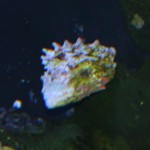
Turban Snail
Common Name: Turban Snail, Top Snail, or Pyramid Snail
Scientific Name: Tectus Fenestratus.
Reef Safe: Yes
Temperament: Very Peaceful
Care Level: Very Easy
Max Size: 2 to 2.5 inches
Appearance:
As the name suggests, the turban snails shell can somewhat resemble the shape of a turban. These snails will also make a very good addition to your cleanup crew.
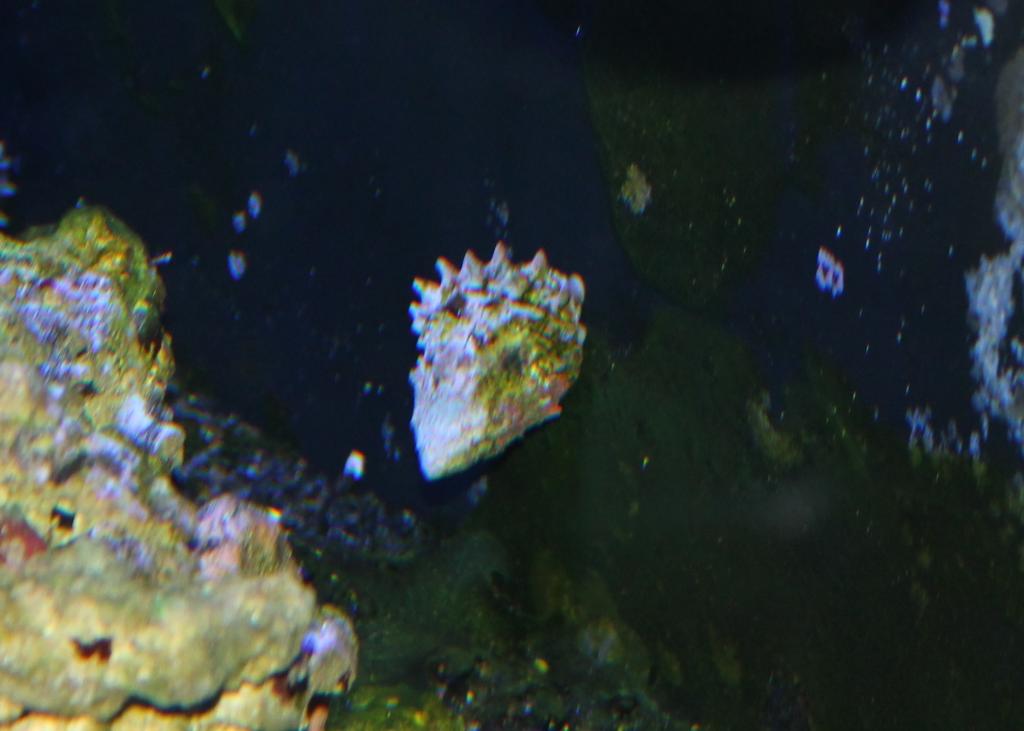
Temperament
Turban snails are very peaceful snails.
Environment
Turban snails do best in aquariums with a lot of live rock . They will best in mature set-up or new set-ups with a lot of green algae for them to eat. Turban snails will also consume diatoms and I have read some reports of them also consuming cayno. Provided there is enough algae to sustain them, turban snails are suitable for aquariums as small as 20 gallons. Their small size also makes them a great option for a reef tank as they are the least likely to be stressing out corals. Trace amounts of copper based medications can be lethal to a turban snail.
Recommended water conditions:
I would refer you to the below article for the typical water conditions that a spiny star astraea snails will do best in. While they are very tolerant to less than ideal water parameters, they will best in the long term with good and stable water parameters.
https://www.reefaquarium.com/2013/the-basics-of-marine-aquarium-water-parameters/
Diet
Turban snails are omnivores. The will eat: phytoplankton, especially hair algae or filamentous algae, cyanobacteria and diatoms. Turban snails will do best in an aquarium with lots of green algae for them to eat, and they will eat a lot of green algae growing in your aquarium as the biggest part of their diet. This would include all types of green algae, hair algae, and macro algaes. If the algae level drops to the point of there not being enough in the aquarium for this snail to eat, you can supplement their diet with dried seaweed.
Note:
It can be more common for a turban snail to fall off the rocks as compared to other snails. If they fall off a rock and land on their shell (on their back), you will need to flip them right-side up as they cannot flip themselves back on the foot. Turban snails have also been known to spawn when kept in mature aquariums with good water quality. They will release their gametes into the water which has been known to make the water a little cloudy. During the next few weeks, tiny Turban Snails will start to appear on the substrate as well as on the glass. At first they will only appear when the lights are off, but as they grow you will start to see them more and more.
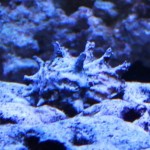
Spiny Star Astraea Snail
Common Name: Spiny Star Astraea
Scientific Name: Astraea Phoebia
Reef Safe: Yes
Temperament: Very Peaceful
Care Level: Very Easy
Max Size: Around 1 inch
Appearance:
These are one of my preferred choices for a cleanup crew in my aquariums. The Spiny Star Astraea has smaller projections along the bottom edge around their shells. This can give them a “Star” like appearance when looking down on to their shells.
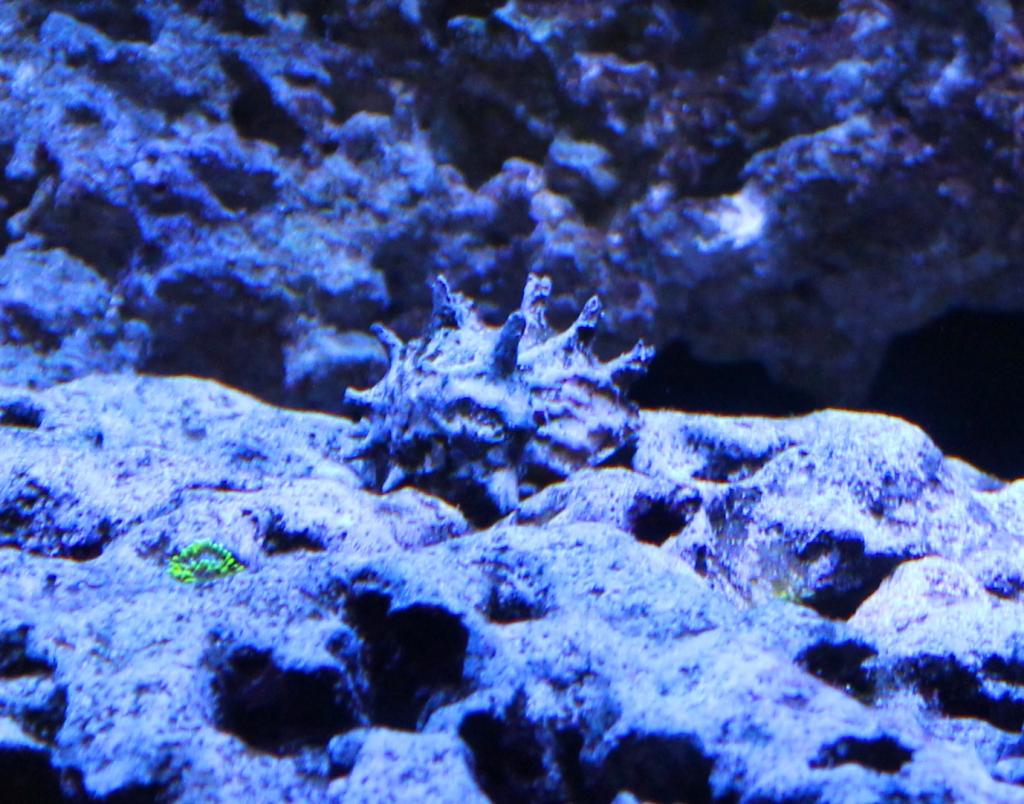
Temperament
Spiny star Astraea snails are very peaceful snails.
Environment
Spiny star astraea snails do best in aquariums with a lot of live rock . They will best in mature set-up or new set-ups with a lot of green algae for them to eat. Spiny star astraea snails will also consume diatoms and I have read some reports of them also consuming cayno. Provided there is enough algae to sustain them, the spiny star astraea snails are suitable for aquariums as small as 20 gallons. Trace amounts of copper based medications can be lethal to a spiny star astraea snail.
Recommended water conditions:
I would refer you to the below article for the typical water conditions that a spiny star astraea snails will do best in. While they are very tolerant to less than ideal water parameters, they will best in the long term with good and stable water parameters.
https://www.reefaquarium.com/2013/the-basics-of-marine-aquarium-water-parameters/
Diet
Spiny Star Astraea snails are omnivores, their diet will consist of: phytoplankton, especially hair algae or filamentous algae, cyanobacteria and diatoms. They will do best in an aquarium with lots of green algae for them to eat. Spiny star astraea snails need to eat a lot of green algae growing in your aquarium as the biggest part of their diet. This would include all types of green algae and hair algae. If the algae level drops to the point of there not being enough in the aquarium for this snail to eat, you can supplement their diet with dried seaweed.
Note:
As these snails crawl around on the rocks, it can be common for them to fall off the rocks sometimes. If they fall off a rock and land on their shell (on their back), you will need to flip them right-side up as they cannot flip themselves back on the foot.
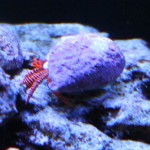
Halloween Hermit Crab
Common Name: Halloween Hermit Crab
Scientific Name: Ciliopagurus Strigatus
Reef Safe: Yes
Temperament: Semi Aggressive
Care Level: Very Easy
Max Size: Around 2 inches (body size only)
Appearance:
Holloween crabs are very good little scavengers and good members of almost any clean-up crew. They will eat any uneaten food they find along with green algaes. They can also help to keep the substrate aerated as they shift through it in search of food. Halloween hermit crabs will remain fairly small, typically maxing out at around 2 inches not including the size of the shell they pick to live in. As with all types of hermit crabs, the Halloween hermit crab will find a shell to fit its body into offering it some protection from predators. They are a bright orange color with red strips with black edges in the legs.
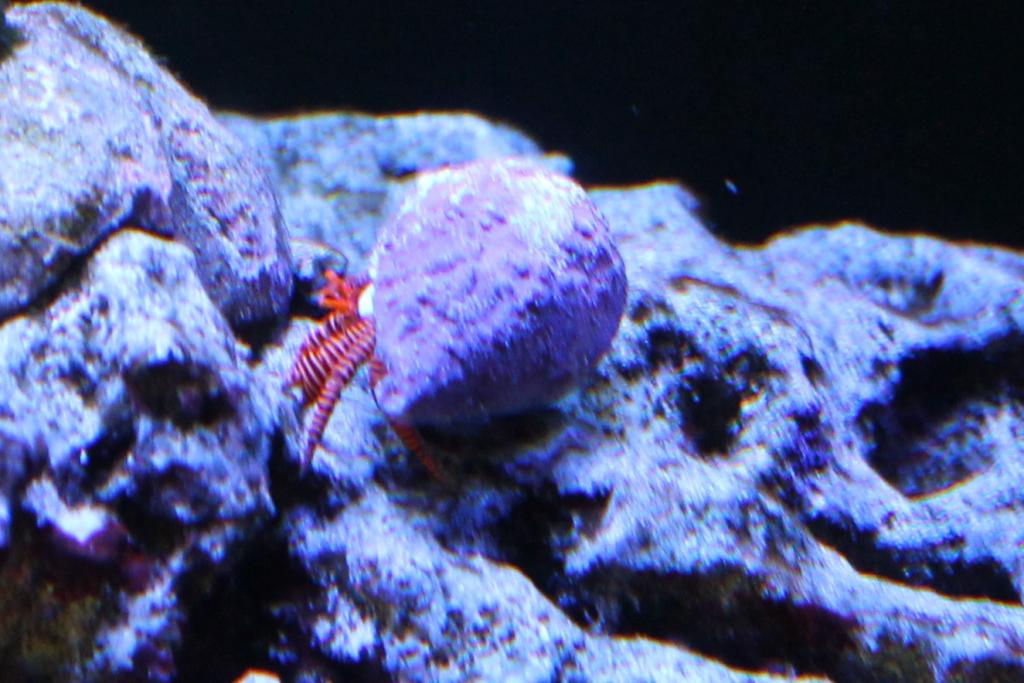
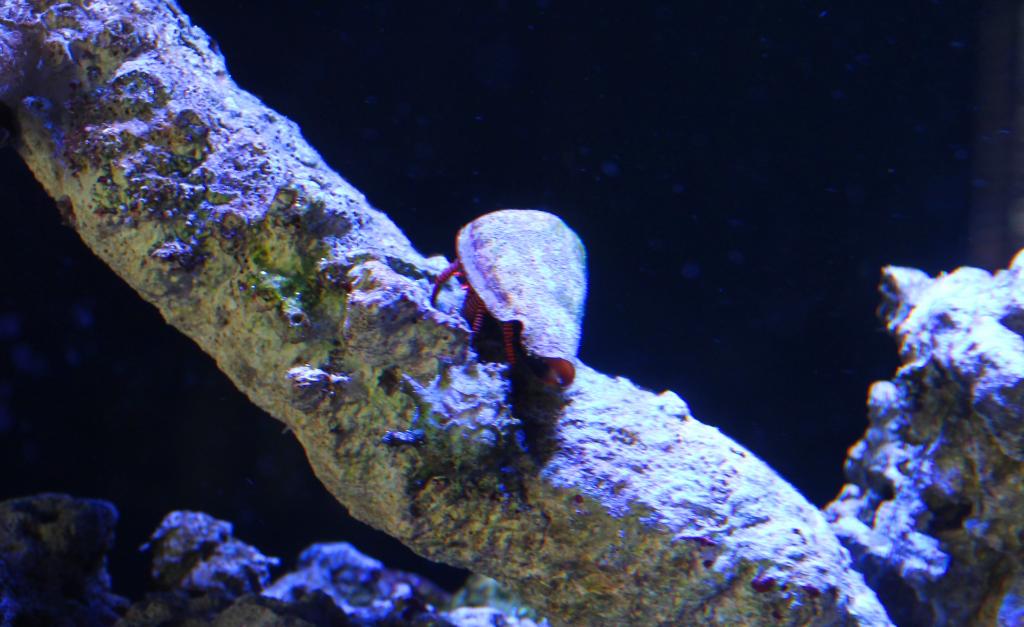
Temperament
As with most crabs, halloween hermit crabs are very opportunistic feedings that have also been known to try to steel food and will aggressively try to get it. They have been known to stress corals by trying to steel food from them as well as walking over them in search of food. They can like a bull in a china shop. As they live in empty shells left behind from other invertebrates, they have been known to kill other hermit crabs or snails in order to steel their shell.
Environment
Halloween hermit crabs do best in aquariums with a lot of live rock as well as substrate for them to rummage through. They prefer to hide in or near the live rock when the tank lights are on and come out into the open to feed when the tank lights are off. Once they have settled into their new aquarium home, they spend a lot more time out into the open with the tank lights on in search of food in the substrate and on the rocks. They will best in mature set-up or new set-ups with green algae for them to eat. Provided there is enough algae and food to sustain them, the Halloween hermit crab is suitable for aquariums as small as 20 gallons. You will also need to ensure there is always a constant supply of empty shells for the Halloween hermit crab to use as they continue to grow to help prevent any aggression
Trace amounts of copper based medications can be lethal to the halloween hermit crab.
Recommended water conditions:
I would refer you to the below article for the typical water conditions that a Halloween hermit crab will do best in. While they are very tolerant to less than ideal water parameters, the will best in the long term with good and stable water parameters.
https://www.reefaquarium.com/2013/the-basics-of-marine-aquarium-water-parameters/
Diet
As Halloween hermit crabs are omnivores, they will do best in an aquarium with green algae for them to eat as well as some meaty foods. Halloween hermit crabs will eat a lot of green algae growing in your aquarium as the biggest part of their diet. This would include all types of green algae, hair algae, and macro algaes. If the algae level drops to the point of there not being enough in the aquarium for the emerald crab to eat, you can supplement their diet with dried seaweed and some additional meaty foods
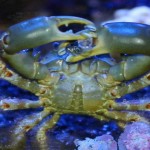
Emerald Crab
Common Name: Emerald Crab
Scientific Name: Mithraculus Sculptus
Reef Safe: Yes
Temperament: Semi Agressive
Care Level: Very Easy
Max Size: Around 2 inches
Appearance:
Emerald crabs are very good little scavengers and members of almost any clean-up crew. They will remain fairly small (around 2 inches) and will be varying shades of green.
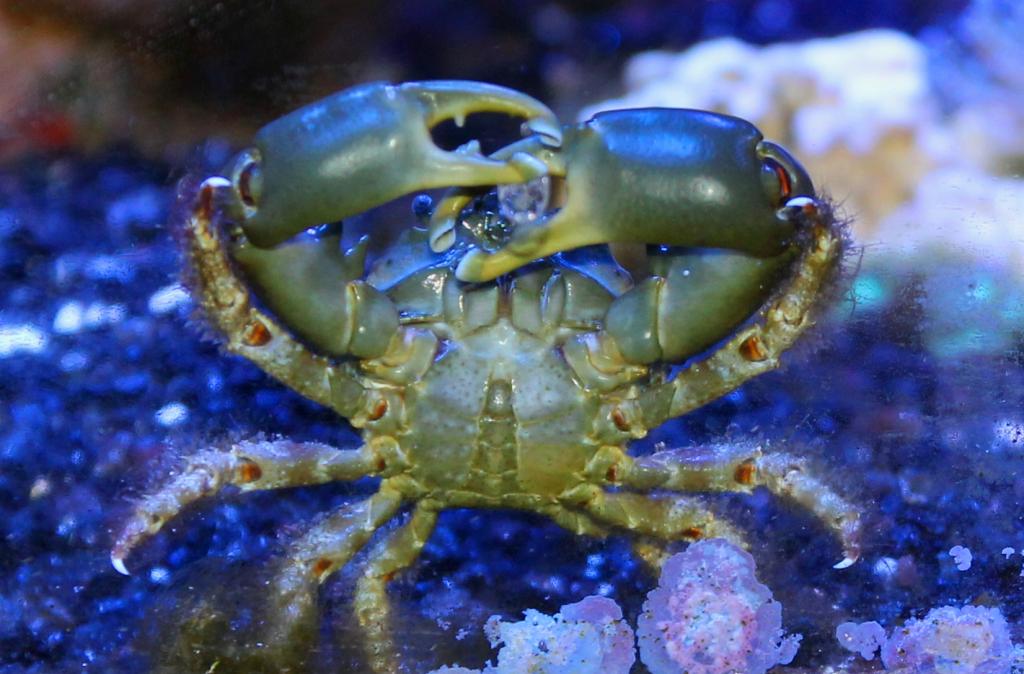
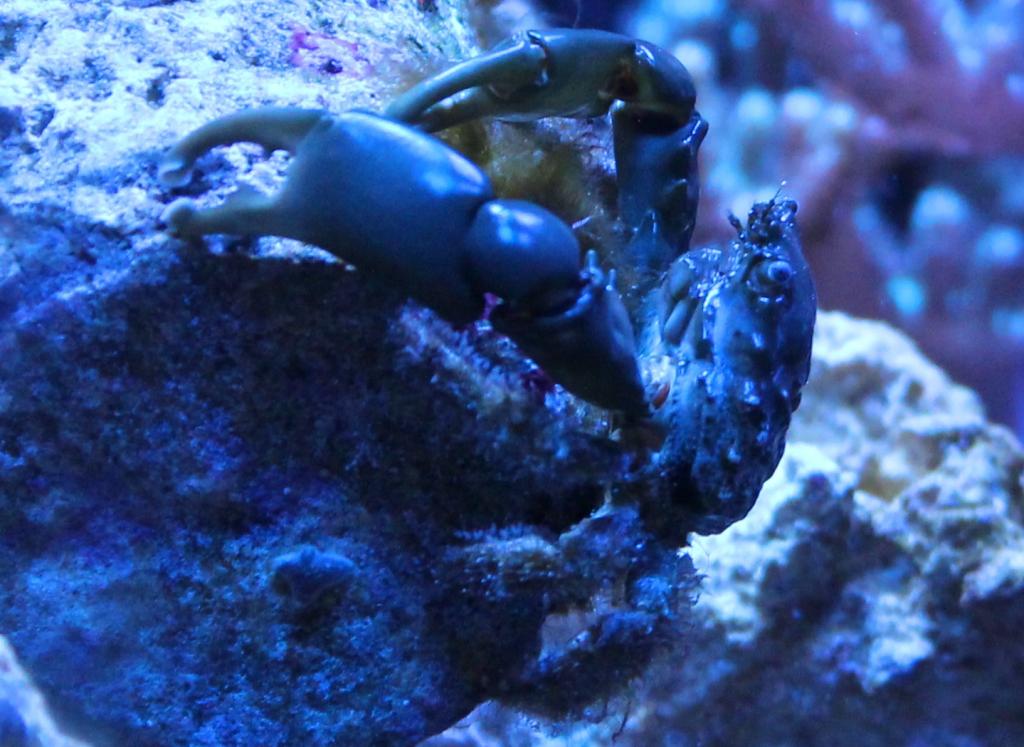
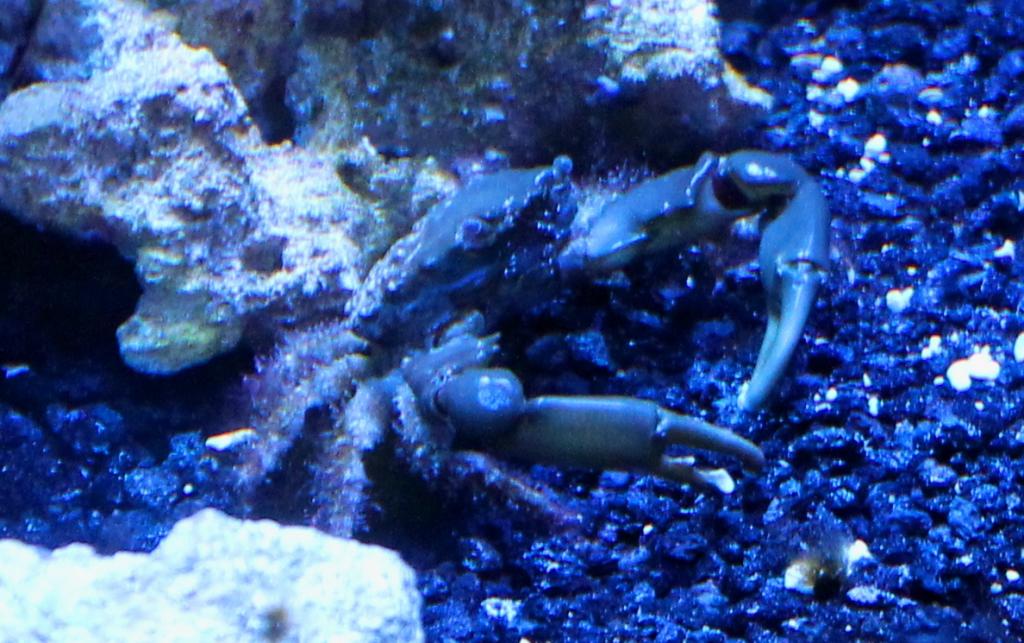
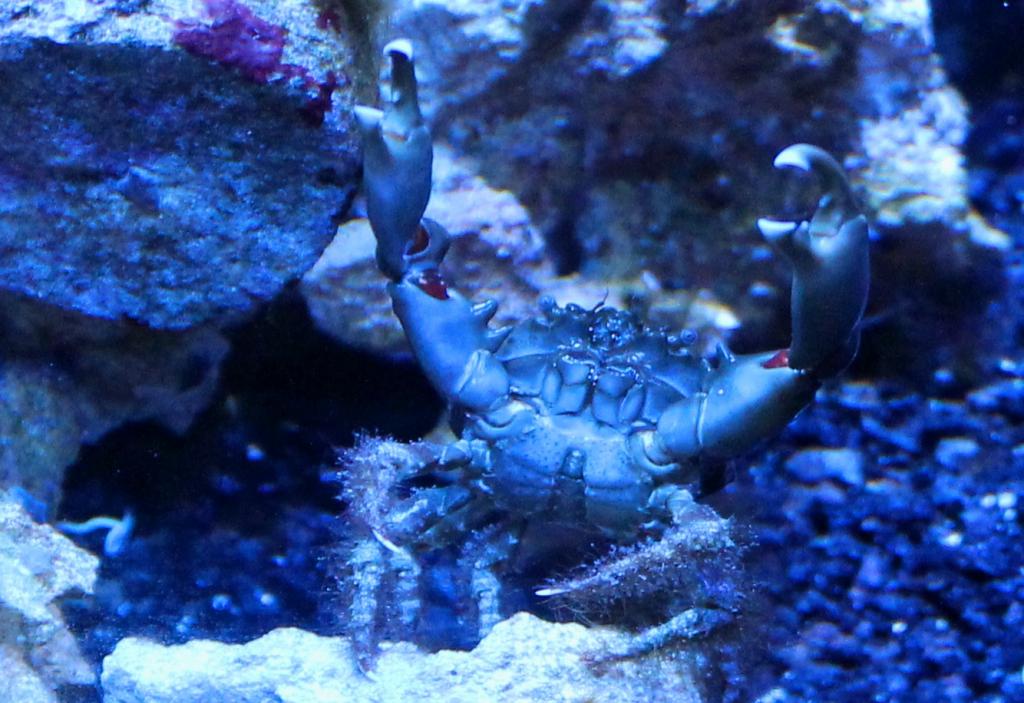
Temperament
As with most crabs, emerald crabs are very opportunistic feedings that have also been known to try to steel food and will aggressively try to get. They have been known to stress corals by trying to steel food from them. Emerald crabs have also been known to claim a small area in the aquarium as their own and will try to chase away other emerald crabs from their spot.
Environment
Emerald crabs do best in aquariums with a lot of live rock. They prefer to hide in the live rock when the tank lights are on and come out to feed when the tank lights are off. Once they have settled into their new aquarium home, they will occasionally venture out into the open with the tank lights on in search of food. They will best in mature set-up or new set-ups with green algae for them to eat. Provided there is enough algae and food to sustain them, the emerald crab is suitable for aquariums as small as 20 gallons.
Recommended water conditions:
I would refer you to the below article for the typical water conditions that an emerald crab will do best in. While emerald crabs are very tolerant to less than ideal water parameters, the will best in the long term with good and stable water parameters.
https://www.reefaquarium.com/2013/the-basics-of-marine-aquarium-water-parameters/
Diet
As Emerald crabs are omnivores, they will do best in an aquarium with green algae for them to eat as well as some meaty foods. Emerald crab will eat a lot of algae growing in your aquarium as the biggest part of their diet. If the algae level drop to the point of there not being enough in the aquarium for the emerald crab to eat, you can supplement their diet with dried seaweed and some additional meaty foods.